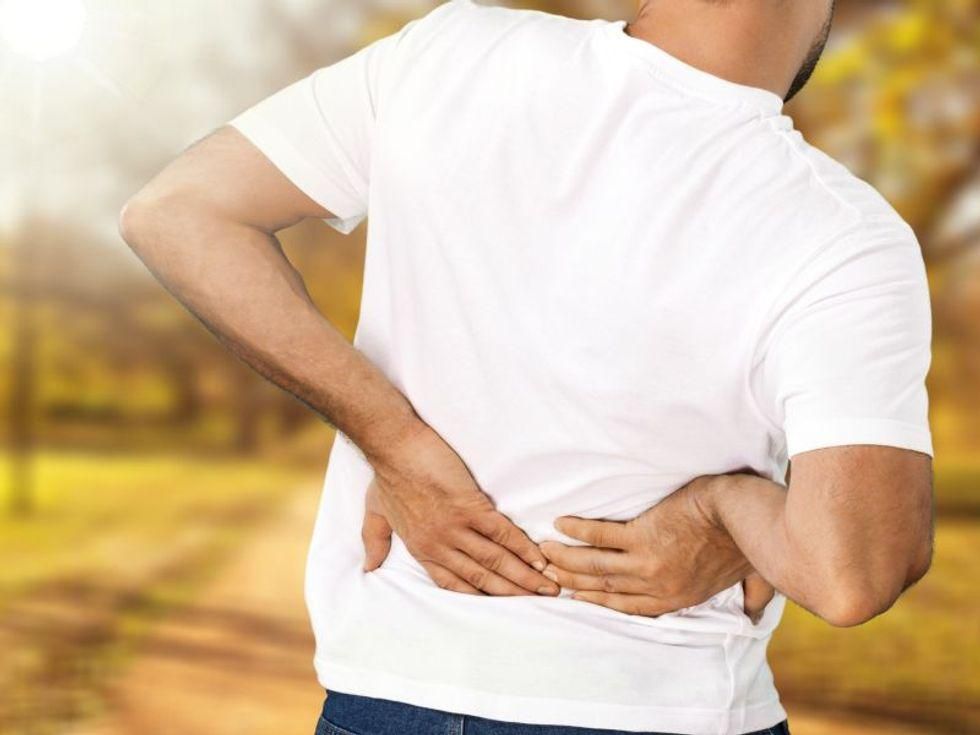THURSDAY, July 29, 2021 (HealthDay News) — There’s much Americans may disagree on, but many share one thing in common: chronic pain.
More than half of U.S. adults suffer from pain, with backs and legs the most common sources, according to researchers from the U.S. Centers for Disease Control and Prevention’s National Center for Health Statistics (NCHS).
Overall, the investigators found that nearly 59% of American men and women were saddled with pain.
“Pain is one of the most common presenting complaints to a doctor’s office,” said Dr. Yili Huang, director of the Pain Management Center at Northwell Health’s Phelps Hospital, in Sleepy Hollow, N.Y.
“It is often the body’s warning sign that something may be wrong. Pain is a symptom and not a disease, so when experiencing new pain, it is important to seek medical advice to help diagnose the cause and to ensure that it is not an emergent or urgent medical condition,” said Huang, who was not involved in the research.
Using 2019 data from the National Health Interview Survey, the NCHS researchers found that 39% of adults had back pain, 37% had hip, knee or foot pain, and nearly one-third had hand, arm or shoulder pain in the past three months. About one in 10 suffered from toothaches.
The goal of the survey was not to draw conclusions from the data, but to provide the groundwork for further analyses, the researchers said.
“Given what we know about the short- and long-term effects of pain, timely, up-to-date national estimates of location-specific pain are an important step in understanding the burden of pain on U.S. adults,” said lead author Jacqueline Lucas, a health statistician/epidemiologist at the NCHS in Hyattsville, Md.
The odds of experiencing pain were related to economics and age, according to the report published July 29 in an NCHS Data Brief.
Those 65 and older, women, white adults and those with incomes below the federal poverty level ($25,750 for family of four in 2019) were most likely to have back pain and lower limb pain, as well as hand, arm or shoulder pain, the report noted.
Among those least likely to experience pain were those aged 18 to 29, men, Asian adults and those with an income 200% of the federal poverty level or above.
Huang said chronic pain is often musculoskeletal and associated with degenerative wear-and-tear, often due to a physically demanding job or aging.
“Women, especially those who are postmenopausal, have a higher incidence of musculoskeletal pain, possibly because of hormonal differences, although the association between hormones and lower back pain is not well understood,” Huang said.
Socioeconomic factors and health are inherently linked, he added.
“It is well-established that pain is associated with social-economic status. Part of that is likely because those who have chronic lower back pain often have physically demanding work. Also, studies have shown a strong association with chronic back, leg and arm pain, and patients with the lowest educational levels and blue-collar workers, likely because of the nature of the work,” Huang said.
Most chronic musculoskeletal pain is probably caused by degeneration and age. Also, “being overweight can lead to added stress to joints of the back and extremities as well, which can lead to increased degeneration,” he noted.
Most people will develop chronic degenerative pain sometime in their lives. “The key to treatment is to focus on quality of life and function, not just the pain,” Huang said.
That doesn’t mean just living with it, however.
“Activities that help us adapt to whatever is causing the pain can be helpful. That can be physical therapy, like exercises, or psychological therapy, like biofeedback or meditation, or medications,” Huang said. “It often makes sense to find a medical professional that is able to help diagnose the source of pain and work with you to find safe options to treat it.”
More information
For more on pain, head to the U.S. National Library of Medicine.
SOURCES: Jacqueline Lucas, MPH, health statistician/epidemiologist, U.S. Centers for Disease Control and Prevention, National Center for Health Statistics, Hyattsville, Md.; Yili Huang, DO, director, Pain Management Center, Northwell Health’s Phelps Hospital, Sleepy Hollow, N.Y.; NCHS Data Brief, July 29, 2021
Copyright © 2025 HealthDay. All rights reserved.

